John Hurrell – 14 March, 2012
The way these artists work with or against the picture plane, delineate the contours versus planes of shaped forms, have blind faith in a process and adhere to it no matter what (or consider compositional balance or tonal accentuation) make it an intriguing combination of contradictions and parallels.
Auckland
Alexandra Kennedy, Kathy Barry, Monique Jansen and Sarah Monro
Quattro
22 February - 22 March 2012
The work of these four artists is wall-based, interested in geometry and based on abstraction - sort of. Some is not purely abstract but figurative as in referencing the real world or its space - like with roadwork safety barriers or strips of folded cardboard rendered realistically with shadows. You can split this curious group in two for Kathy Barry and Sarah Munro are preoccupied with pictorial space, and Alexandra Kennedy and Monique Jansen with the picture plane and processes of placement and how that affects the composition. Barry and Munro are also interested in processes of shape or form-making, but their disruptions (when they occur) are more arbitrary.
Monique Jansen‘s large screenprint of fluoro-orange safety netting, with its stacked elongated rectangles, has two snipped lengthy portions overlaid, being flush the lefthand side and dropping down by three rows the righthand end. The result is a shimmering moire effect when experienced directly, and a complex set of gridded, irregular columns that when studied look oddly organic and non-industrial.
The nearby wall painting by Alexandra Kennedy has affinities with Jansen’s contribution. Set configurations of large coloured equilateral triangles, touching or butted together, are arranged tightly on the white wall in three different alignments, combinations that are mirrored or twisted. These are consistently grouped in formation on the left and get less obvious on the right where two green triangles are introduced. They seem to disrupt the process, sneaking into view on the edges of dark blue polygons.
As a composition though this image seems a bit lack lustre. The resulting dynamic doesn’t hook you in the way that at least the Jansen and Barry works do.
Kathy Barry‘s crisp angular pencil drawings, reminiscent of sections of Scalectrix car track, like Kennedy’s painting tend to focus on contrasting halves: solid forms in spaces versus faintly rendered shapes dissolving. Her drawn folded strips contain parallel dark lines that when rendered as faint tones, become halftone diamonds when overlaid in double, and black ones when overlaid in triple.
In one drawing, sections of black line pop out of the strip and independently peak like vaulting graph lines, only to then re-enter like wiring into the track. All the illusionistic portions of these configurations have cast shadows positioned at their doubled back, folded corners. They provide drama and deepen the space.
The Sarah Munro images also feature shadows, but real ones, for her thirty-five flat, lasercut, architectural shapes hover in careful formation about half an inch out from the wall, their soft shadows therefore running along the bottom edges - far away from the ceiling lights. Almost all of the four tones (between black and white) of enamel are consistently allocated to four spatial directions, but one cut-out (the second from the right on the second row from the bottom) is inconsistent. It contradicts the system set out by the other thirty-four pieces.
Munro has her skeletal ziggurat elements arranged in tight isometric formation within four parallel edges, suggesting planes aligned vertically, horizontally and diagonally across. Inside various curved edges and bevelled sides make the pieces less coherent as a floating jigsaw - as if extra bits from a giant disc or diamond have tumbled into it.
I don’t think Munro and Kennedy’s pieces are as successful as those by Barry and Jansen, but this tightly interconnected group show is a clever line up overall. The way these artists work with or against the picture plane, delineate the contours versus planes of shaped forms, have blind faith in a process and adhere to it no matter what (or consider compositional balance or tonal accentuation) make it an intriguing combination of contradictions and parallels.
John Hurrell
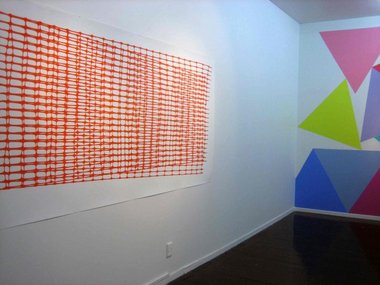
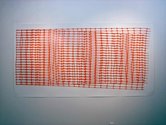
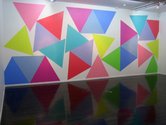
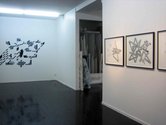
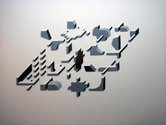
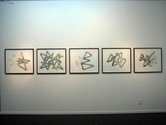
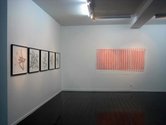
 Advertising in this column
Advertising in this column Two Rooms presents a program of residencies and projects
Two Rooms presents a program of residencies and projects



This Discussion has 0 comments.
Comment
Participate
Register to Participate.
Sign in
Sign in to an existing account.